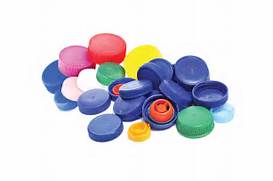
When I look through school-supply catalogs, I shake my head at the amount of money some people are apparently willing to pay for little fuzzy pompoms, foam paper, feathers, sequins, stamps, stickers, and other fancy, colorful “art supplies.” Nothing against little fuzzy pompoms, but there’s a multitude of fabulous, free art materials hiding in plain sight all around us. For a while, when she was six or seven years old, one student I knew enjoyed making art out of pencil shavings. In her backpack, she always carried a little zip-lock bag filled with them. I seem to remember she glued them on paper in various designs.
Don’t worry, I am not suggesting you give your students pencil shavings. Pencil shavings are dirty and they smell bad. However, they do have the advantage of being free, which is a great quality in an art material!
Using recycled materials for art projects does much more than save money. It promotes a spirit of exploration and discovery, it encourages curiosity, and best of all, it teaches children that creativity doesn’t come from what we buy, but from how we think. What a wonderful lesson.
One of the most extraordinary works of art ever created, Antonio Gaudi’s mosaic bench in the Parc Guell in Barcelona, was made with recycled bits of broken plates and ceramic scraps from factories around the city. The serpentine bench, said to be the longest bench in the world, is a symphony of color and design. Gaudi let himself be inspired by the materials he saw all around him. Your students can be inspired too.
Try using free art materials from recycled items to inspire children’s creativity.
Some free household art materials your children might enjoy doing creative art projects with include:
Twist-ties
Rubber bands (children love to make giant rubber-band balls)
Those thin little clearish-white plastic tags that attach price tags to clothing
Eggshells – Wash, crush, color, and use for mosaics; or make a hole in one end with a pin, blow out the egg and scramble it or bake with it, and color, paint, or draw on the shell with markers
Plastic bottle-tops and gallon-size milk caps (in my county they don’t recycle these, but find out what the recycling rules are where you live) – use for building, or make mobiles and sculptures
Shiny toaster-pastry wrappers
Styrofoam egg cartons – build things, or decorate to be jewelry or hair-accessories containers
Packing peanuts and bubble wrap
“Confetti” from punching holes in old magazines
Squares of puffy cotton from jewelry gift boxes
Free address stickers – cut up into little shapes and make collages
Plastic fruit cup/applesauce/gelatin cups
Giveaway advertising magnets – cut up and use as backing to make creative new magnets
Cardboard boxes from cereal, pasta, etc.
Shoe boxes – they make great apartments for beanie animals, action figures, trolls, and small dolls
(Of course, make sure all materials are clean and that your under-three students, or any children who still put things in their mouths, cannot swallow any small pieces.)
Remember: Before you throw it out, stop and think: Could my students use this for creative art projects?
(This article is adapted from a piece in my book “Teaching Creativity.”
